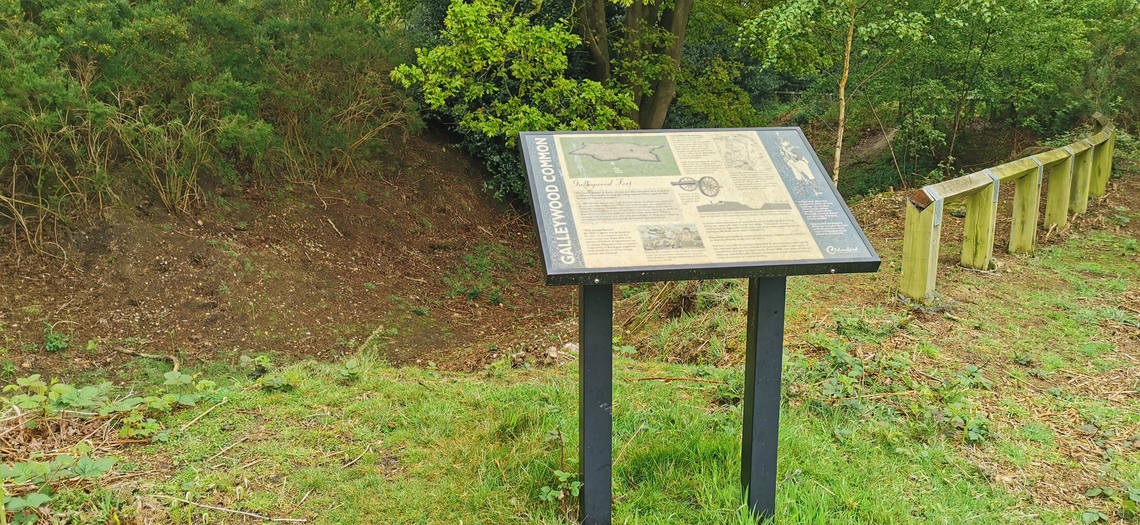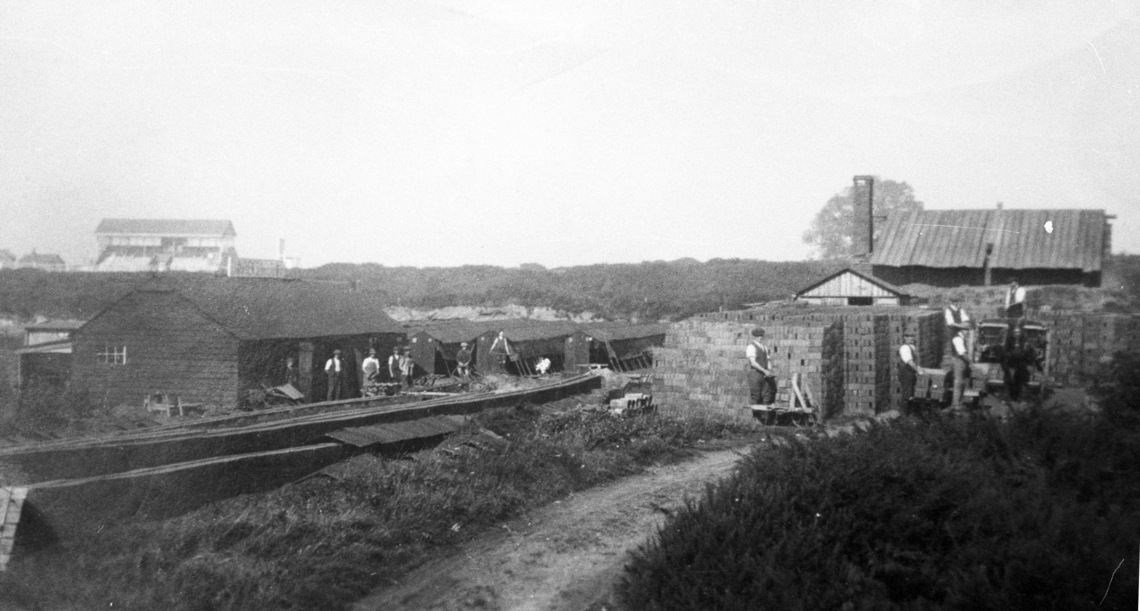The Galleywood Common geology was laid down at the end of the last Ice age (11,500 years ago) leaving a terminal moraine which contained deposited glacial debris scraped down from what is now Cambridgeshire, Suffolk and Norfolk.
The Common, Lowland Heath, has been an important feature of the hamlet around which the village Galleywood has grown, providing grazing land, furze, and wood for gathering and gravel for building, and road making together with Horse Racing being recorded from 1759-1935.

By 1802 a large star-shaped Fort with artillery batteries, redoubts and earthwork fortifications were built by British Army on the racecourse and astride the Margaretting Road in response to a threat of invasion by Napoleonic forces along the ‘Salt Road’ from Maldon to London. Following British victory at the battle at these defensive works were decommissioned around 1813.
The Chelmsford Golf Club – In 1893 a nine-hole links course, designed by Tom Dunn, opened on Galleywood Common. The club house was accommodated in the small building attached to the west side of the Pub. The game bore little relation to what it is today. It was played with a gutta-percha ball and clubs with hickory shafts hence the seemingly generous “Par” score allocations for each hole.
Cyril Yorker who caddied in 1910 described the course as no Gleneagles or Wentworth, just a great expanse of gorse and heather where more time was spent hunting for the balls than actually playing. The other constraint was having to fill the holes on the race course before race days. Chelmsford Golf Club was constituted in 1893 and played on Galleywood Common until they moved to Widford in 1912.
The Common and racecourse buildings were occupied by the British Army as a training ground and artillery defences during WW1 and again during WW2 with anti-aircraft defences. In 1942 The Common was conveyed to Chelmsford Rural District Council in perpetuity. Excacvated parts of the Common were used for landfill following the Bombing of Hoffmans and post war clerance. Part of the site was then occupied by the Marconi Company for the development of 'Tropospheric Scatter' communications in late 1950s connecting Galleywood with Start Point in Devon. Later the water company also constructed a ground mounted reservoir.
The remains of the grandstands and stables area was used as a Chelmsford Borough Council depot, and later the Stables Nursery was established in the old jockey changing rooms and cottages, In 2009 The Galleywood Heritage Centre was established in the completly refurbished ground floor remains of the Grandstand. The responsibilty for The Common is now with Chelmsford City Council
St. Michael and All Angels is Grade II listed and has the distinction of being built in 1872 in the middle of a racecourse.
This beautiful church in brick and stone which Arthur Pryor, of Hylands, gave to Galleywood was designed in the Early Decorated style of architecture by Piers St. Aubyn. Messrs. Putnam and Fotheringham of London were the builders, and the work completed in 364 days, at the cost of £6,000. Building materials were transported by rail to the now disused railway siding in Private Road.
Erected on a site which is 84m above sea level and given a tower and spire with a combined height of 40m, the church dominates the surrounding countryside, as its donor no doubt intended. Inside there is an atmosphere of space and height, due to Piers St. Aubyn's skill in design and the absence of any clutter of tombs or memorials or, indeed, overmuch stained glass. The edifice consists of a chancel, nave, three aisles, two transepts; a south porch and a pinnacled square tower containing eight bells, surmounted by an octagonal spire in Doulting Stone (from Somerset)
The Mill Pond – Originally a puddled clay lined dew pond at 84m above sea level, one of the highest points on the Common. It was dug to contain emergency water for the adjacent Windmill (demolished in the 1920s) which stood on the opposite side of the road to use as fire extinguisher, and as a lubricant when resurfacing the mill stones also for passing horses and replenishing boilers on steam power road vehicles.
Rous Cottage – originally the site of a betting stand and small beer house, which was eventually rebuilt as the Admiral Rous Inn, named after Henry John Rous, Senior Steward of the Jockey Club. Later this became the Admiral Rous Public house and was the scene of a brutal murder of his wife, committed by the Pub Landlod.The perpetrator was the last man in the 19th Century to be hanged in Chelmsford Gaol.
A brickworks was operating within the confines of the race ourse, the clay being excavated on site. The brick kilns were fuelled by coke, originally transported from the Chelmsford railway goods yard by horse and cart. The brickworks were shut down in the beginning of the WW2, as the continually running kilns could be be seen at night by enemy aircraft. This site is now a large pond within the wooded area.
A large part of the lower common, on both sides of the Stock Road, was ‘put the plough’ under the 1940 Dig for Victory campaign to combat food shortages. The furthest two areas of the Common abutting the A12 roundabout are manual seeded wildflower meadows.
In later years of the racecourse steeple chasing was introduced and a water jump was established adjacent to the boundary with Bryon Hall. The turning point of the original racecourse is where the A12 flyover has been built.
The Mire – A ‘Bog’, which frequtly dried out due to lower seasonal rain fall in previous decades and water subtraction by surrounding trees and scrub. Willow and bramble have been subsequently cleared and Bulrush and Flag Iris have survived and now thriving again amongest the ubiquidous Ferns.
Mill Hill Pump – One of the last public hand pumps used daily by Villagers, until piped water eventually came to the rest of Galleywood in the 1950s.



